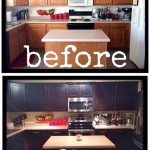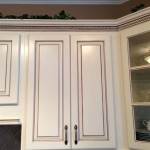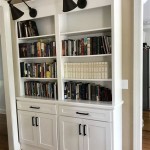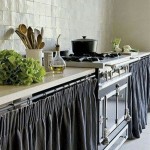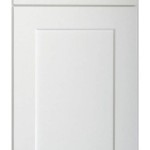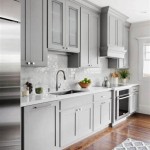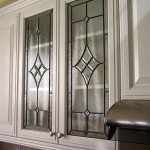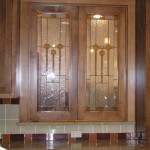Best Kitchen Cabinet Paint For A Fresh Look Room
Kitchen cabinets often form the visual cornerstone of a kitchen. Their appearance significantly impacts the overall aesthetic of the room. Refacing or replacing cabinets can be a costly endeavor. A more economical and effective alternative involves repainting. Selecting the best kitchen cabinet paint is crucial for achieving a durable, attractive, and lasting finish. This selection process involves considering various paint types, their characteristics, application techniques, and the desired aesthetic outcome.
The longevity and visual appeal of painted kitchen cabinets hinge on the paint's ability to withstand daily wear and tear. Factors such as moisture, grease, and frequent cleaning necessitate a paint that offers both durability and resistance to these elements. The choice of paint should also complement the existing kitchen design and the homeowner's personal style. This careful consideration ensures that the repainted cabinets enhance the room's overall appeal and functionality.
Understanding Paint Types and Their Properties
Several paint types are suitable for kitchen cabinets, each offering distinct advantages and disadvantages. The most common options include latex, oil-based, and alkyd paints, along with specialized cabinet paints designed for enhanced durability and adhesion. Understanding the properties of each type allows for an informed decision based on specific needs and preferences.
Latex Paints: Latex paints are water-based and known for their ease of application, low odor, and quick drying time. They are generally more environmentally friendly than oil-based paints due to their lower VOC (volatile organic compounds) content. Latex paints offer good color retention and are resistant to cracking and fading. However, they may not be as durable as oil-based paints and can be susceptible to chipping and scratching, especially in high-use areas. For kitchen cabinets, a high-quality acrylic latex paint is recommended for enhanced durability and adhesion. The acrylic component improves the paint's ability to bond to the cabinet surface, providing a more resilient finish.
Oil-Based Paints: Oil-based paints, also known as alkyd paints, offer superior durability, hardness, and resistance to solvents and grease. They provide a smooth, even finish that is highly resistant to chipping and scratching. Oil-based paints are particularly well-suited for kitchen cabinets due to their ability to withstand frequent cleaning and exposure to moisture. However, they have several drawbacks, including a strong odor, longer drying time, and higher VOC content. This makes them less environmentally friendly and potentially hazardous to apply. Application of oil-based paints requires careful ventilation and the use of appropriate safety equipment. Cleanup also requires solvents, adding to the complexity of the process.
Alkyd Paints (Water-Based): These paints attempt to bridge the gap between traditional oil-based and latex paints. They offer many of the benefits of oil-based paints, such as a durable, hard finish and excellent adhesion, while also being water-based for easier cleanup and lower VOC content. These paints are becoming increasingly popular for kitchen cabinets as they provide a good balance of performance and environmental considerations. They typically dry faster than oil-based paints and offer better color retention than some latex paints.
Cabinet-Specific Paints: Several paint manufacturers offer paints specifically formulated for kitchen cabinets. These paints typically include enhanced adhesion properties, increased durability, and resistance to grease, moisture, and stains. They are often available in a range of sheens designed to withstand frequent cleaning and maintain a polished look. These paints are generally more expensive than standard latex or oil-based paints, but their specialized formulation can provide a superior finish and longer lifespan for kitchen cabinets.
The selection of paint type should consider factors such as the existing cabinet material, the desired level of durability, and environmental concerns. For example, if the cabinets are made of laminate, a specialized primer and paint with strong adhesion properties are necessary. If environmental impact is a primary concern, a low-VOC latex or water-based alkyd paint would be a more suitable choice. Careful consideration of these factors ensures that the selected paint meets the specific needs of the kitchen and the homeowner.
Preparation and Application Techniques
Proper preparation and application techniques are essential for achieving a professional and long-lasting finish on kitchen cabinets. Regardless of the paint type selected, thorough preparation ensures optimal paint adhesion and a smooth, even surface. The application process itself also requires attention to detail to prevent drips, runs, and uneven coverage.
Surface Preparation: The first step in preparing kitchen cabinets for painting involves removing all hardware, such as knobs, pulls, and hinges. This allows for easier access to the cabinet surfaces and prevents paint from getting on the hardware. The cabinets should then be thoroughly cleaned with a degreasing cleaner to remove any grease, dirt, or grime. This is particularly important in kitchens, where cabinets are often exposed to cooking splatters and food residue. After cleaning, the cabinets should be rinsed with clean water and allowed to dry completely.
Sanding is a crucial step in preparing cabinets for painting. Sanding creates a slightly textured surface that provides better adhesion for the paint. Use a medium-grit sandpaper (around 120-150 grit) to lightly sand the entire surface of the cabinets. For cabinets with a glossy or varnished finish, a more aggressive sanding may be necessary to remove the sheen and create a suitable surface for painting. After sanding, wipe down the cabinets with a tack cloth to remove any dust particles. This ensures a clean surface free of debris that could interfere with the paint adhesion.
Priming is often an overlooked but essential step in painting kitchen cabinets. Primer provides a uniform surface for the paint to adhere to, improves paint coverage, and helps to prevent stains from bleeding through. Choose a primer specifically designed for cabinets, such as an adhesion primer or a stain-blocking primer. Apply a thin, even coat of primer to the entire surface of the cabinets, using a brush, roller, or sprayer. Allow the primer to dry completely according to the manufacturer's instructions before proceeding to the next step. Lightly sand the primed surface with fine-grit sandpaper (around 220 grit) to smooth out any imperfections and create an even better surface for painting.
Application Techniques: The application of paint to kitchen cabinets can be done using a brush, roller, or sprayer. Each method has its advantages and disadvantages, and the choice depends on the desired finish and the skill level of the painter. Brushes are suitable for smaller areas and detailed work, while rollers are better for larger, flat surfaces. Sprayers provide the most even and professional finish but require more skill and equipment.
Regardless of the chosen method, it is important to apply thin, even coats of paint. Avoid applying too much paint at once, as this can lead to drips and runs. Apply the paint in the direction of the wood grain, if applicable, to achieve a more natural-looking finish. Allow each coat of paint to dry completely before applying the next coat. Typically, two coats of paint are sufficient for achieving full coverage and a durable finish.
Between coats of paint, lightly sand the surface with fine-grit sandpaper (around 320 grit) to smooth out any imperfections and create a better surface for the next coat. Wipe down the cabinets with a tack cloth to remove any dust particles before applying the next coat of paint. After the final coat of paint has dried completely, re-install the hardware and carefully inspect the cabinets for any imperfections. Touch up any areas as needed to ensure a flawless finish.
Factors Influencing Paint Selection
Selecting the best kitchen cabinet paint involves considering several influencing factors, including the cabinet material, existing finish, desired sheen, and budget constraints. Each of these factors plays a role in determining the most suitable paint type and application techniques.
Cabinet Material: The material of the kitchen cabinets significantly impacts the choice of paint. Wood cabinets, whether solid wood or wood veneer, generally accept a wide range of paint types. However, careful preparation, including sanding and priming, is essential for achieving optimal adhesion. Laminate cabinets, on the other hand, require specialized primers and paints that are designed to bond to non-porous surfaces. Without proper preparation and the use of appropriate products, paint may peel or chip off laminate cabinets over time. MDF (medium-density fiberboard) cabinets are also common and require careful priming to seal the surface and prevent the paint from being absorbed unevenly. The primer should be specifically designed for MDF to ensure proper adhesion and a smooth finish.
Existing Finish: The existing finish on the kitchen cabinets also influences the paint selection. If the cabinets have a glossy or varnished finish, it is necessary to sand them thoroughly to remove the sheen and create a suitable surface for painting. In some cases, it may be necessary to use a chemical stripper to remove the existing finish entirely. If the cabinets are already painted, it is important to determine the type of paint used previously. If the existing paint is oil-based, it is generally recommended to use an oil-based paint for the new coat. If the existing paint is latex, a latex paint can be used. However, it is important to ensure that the new paint is compatible with the existing paint to prevent adhesion problems. Testing a small, inconspicuous area before painting the entire surface is advisable.
Desired Sheen: The sheen of the paint refers to its level of glossiness and impacts both the aesthetic appeal and the durability of the finish. Common sheen options include flat, matte, eggshell, satin, semi-gloss, and high-gloss. Flat and matte sheens are less reflective and tend to hide imperfections but are also less durable and more difficult to clean. Eggshell and satin sheens offer a good balance of durability and aesthetics, providing a slightly reflective surface that is easier to clean than flat or matte sheens. Semi-gloss and high-gloss sheens are the most durable and easiest to clean but also highlight imperfections more readily. For kitchen cabinets, a satin or semi-gloss sheen is generally recommended, as these offer a good combination of durability, aesthetics, and ease of maintenance.
Budget Constraints: The cost of paint can vary significantly depending on the type, brand, and quality. High-quality paints typically offer better durability, coverage, and color retention, but they also come at a higher price point. When selecting paint for kitchen cabinets, it is important to consider the budget constraints and balance the desired level of quality with the cost. It may be possible to save money by opting for a less expensive paint, but it is important to ensure that the paint is still suitable for kitchen cabinets and provides adequate durability and resistance to moisture and grease. Investing in a high-quality primer can also help to improve the performance of a less expensive paint and extend the lifespan of the finish.

How To Paint Kitchen Cabinets Best Color Ideas Cost

65 Best Kitchen Paint Color Ideas And Combinations For 2025

20 Kitchen Paint Colors That Are All The Rage In 2024

35 Best Kitchen Cabinet Paint Colors According To Designers

40 Best Kitchen Color Ideas For 2025

21 Kitchen Cabinet Ideas Paint Colours Inspiration Benjamin Moore

Best Paint For Your Next Cabinet Project The Home Depot

86 Designer Approved Kitchen Paint Color Ideas For 2025

40 Best Kitchen Color Ideas For 2025

27 Designer Approved Green Kitchen Cabinet Ideas For 2025
Related Posts

